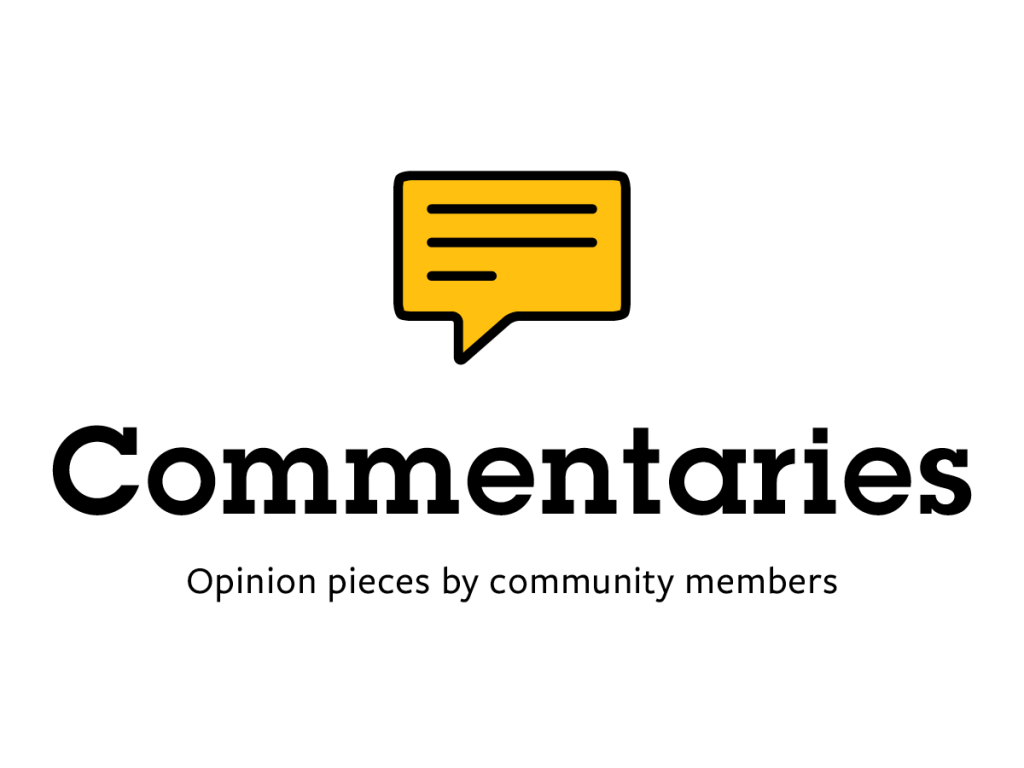
This commentary is by Jill Martin Diaz. They are executive director of the Vermont Asylum Assistance Project and director of legal services for Connecting Cultures / New England Survivors of Torture and Trauma.
I’m processing election results as a heritage Spanish- speaking “dirty immigration lawyer” of white-Latine descent, but also as someone who only recently came to understand, accept and love myself as trans. I often wonder how earlier life might have been if I had felt safe to love myself sooner, instead of fearing and doubting and entangling myself in avoidant and, sometimes, destructive situations. Today, I woke up wondering if queer and trans youth feel safe to love themselves, too, given the electorate’s emphatic message that we wish they didn’t exist.
I learned early that LGBTQ+ identity was something to hate and hide, despite my family’s best efforts, and that anyone outside dominant norms was vulnerable to harm from which those in power would not protect them. I landed in Vermont, seeking refuge to live openly in my queer identities, where my risk of needing protection from harm was comparatively lower (given my many other privileges).
What I am describing is the root of forced migration, a set of factors that push people from their homelands and pull them to places of refuge. When crossing international borders, migration is strictly regulated by law, but inward migration to the U.S. is often wrongly labeled “illegal.”
Since the mid-20th century, international and federal law have mandated that the U.S. must “withhold” removal of people facing persecution in their countries on protected grounds. In 1980, the Refugee Act added the option of discretionary asylum, offering more permanent status, family reunification and potential U.S. citizenship.
Federal law requires only that a person be present in the U.S. or at its border and express fear of return to invoke their right to a fair asylum hearing or, at minimum, withholding of removal. Therefore, there is no “wrong” way to seek asylum, and anyone with an unexhausted claim is, by law, an asylum seeker. People cannot “be illegal.”
Most people seeking help from VAAP are asylum seekers. We explain, quoting Sarah Morando Lakhani, that U.S. immigration law offers them three pathways to status: family-based (“blood”), employment-based (“sweat”) and humanitarian-based (“tears”). Programs like VAAP focus on the last, which are often too time-intensive, politicized, and unstable for private bar coverage.
Asylum and withholding are two of many humanitarian pathways in U.S. law, and people may pursue multiple routes if they can. Success depends not only on finding affordable counsel, which isn’t provided, but also on proving the “right” kind of harm to the “right” part of their marginalized identity. Even imminent death upon deportation is often insufficient.
This remains true today, Nov. 6, 2024, just as it was on Nov 9, 2016. I had just passed the bar and was preparing to handle my own immigration caseload. My team and I arrived at work to an influx of messages filled with anger and fear. We gathered in a conference room, where I tried to support colleagues more directly impacted by the day’s explicitly anti-immigrant presidential victory. The pressing question was how to respond to our clients and communities when we didn’t even know what to say to our loved ones — or to ourselves.
Gradually, we adapted to an immigration practice marked by diminishing rule of law, race-based discrimination, reduced due process protections and policies pitting immigrant groups against one another. We applied every legal tool we knew, studying past cases to predict outcomes. The law predicted asylum eligibility for cases involving domestic violence, gang violence, climate displacement, and structural exclusion.
But soon came the Muslim bans, Trump v. Hawaii, Matter of A-B- (I), and Title 42. U.S. immigration law, rooted in white supremacy, had evolved toward more equitable outcomes, characterized by partisan politics as “absurd results.” The executive branch tested the limits of its plenary power and effectively course-corrected to halt this evolution.
We screened clients for eligibility under prevailing immigration law, filed applications, challenged pretextual evidence requests, engaged Congressional advocates for accountability, and won — and lost — cases. We held “know your rights” training at community centers, assuring people that statutory law remained intact, and they could safely work, take children to school, go to court or seek emergency help.
We mobilized volunteers at detention centers, airports, and land borders to help people assert their legal rights where government’s insulation from accountability is strongest. Guided by organizations like VAAP, we maintained service quality and supported local lawmaking to improve immigrants’ lived experiences. We began therapy (and kept going). We persisted.
I started each legal intake with, “What are your goals?” — quickly adding that justice wasn’t on offer. As a direct services immigration attorney, I can assist with work authorization, identity documents, temporary or permanent status, family reunification,and safety from removal. “Justice” isn’t an option, but depending on your blood, sweat and tears, I might identify some legal tools we can use to help you meet at least some of your extraordinarily valid and pressing goals.
All of this remains as true today as ever. We have the law (as best we understand it), some facts, recent experience, our therapists and each other.
There is no justice, my first queer love often reminded me. There is just us.
Read the story on VTDigger here: Jill Martin Diaz: On queering immigration justice.



